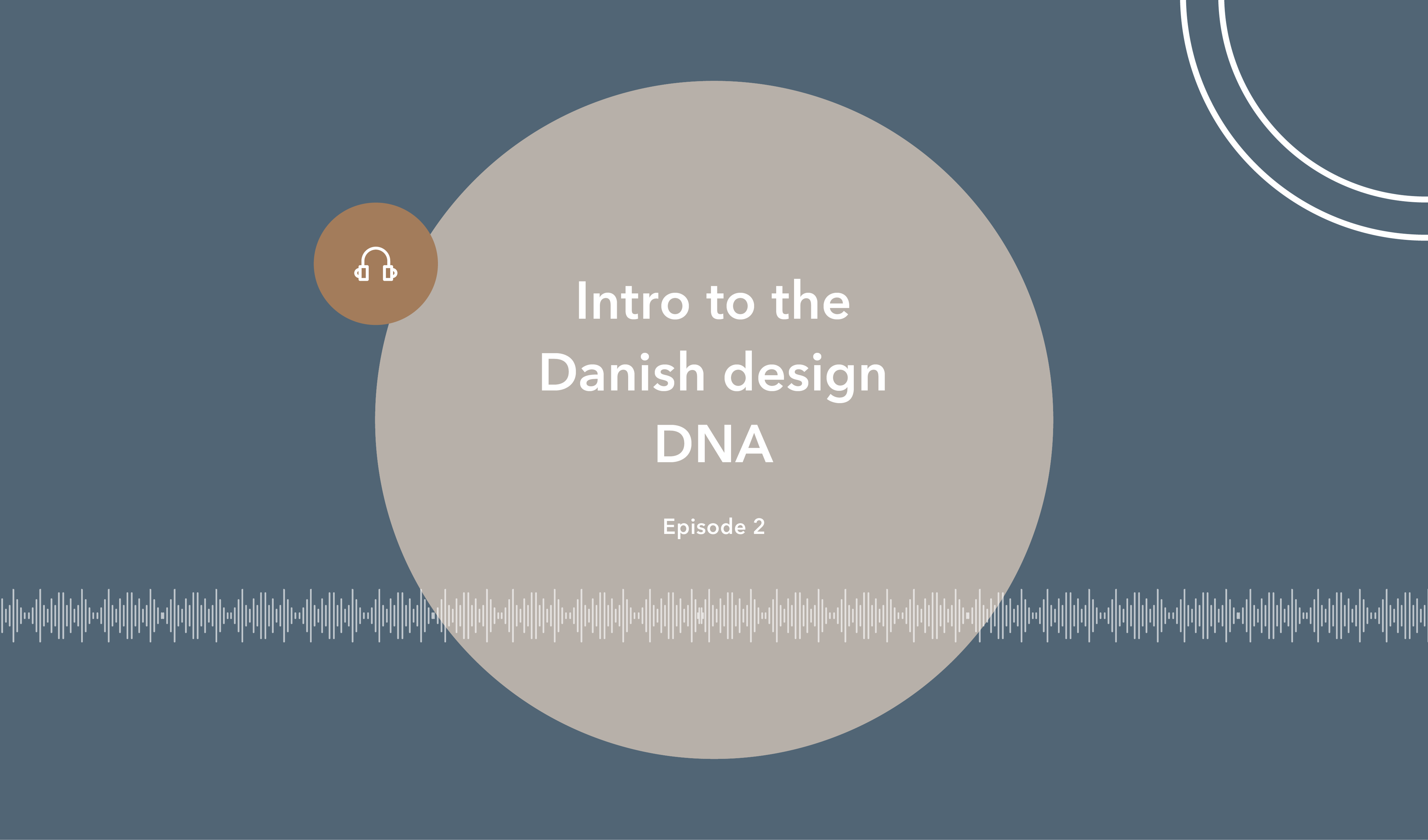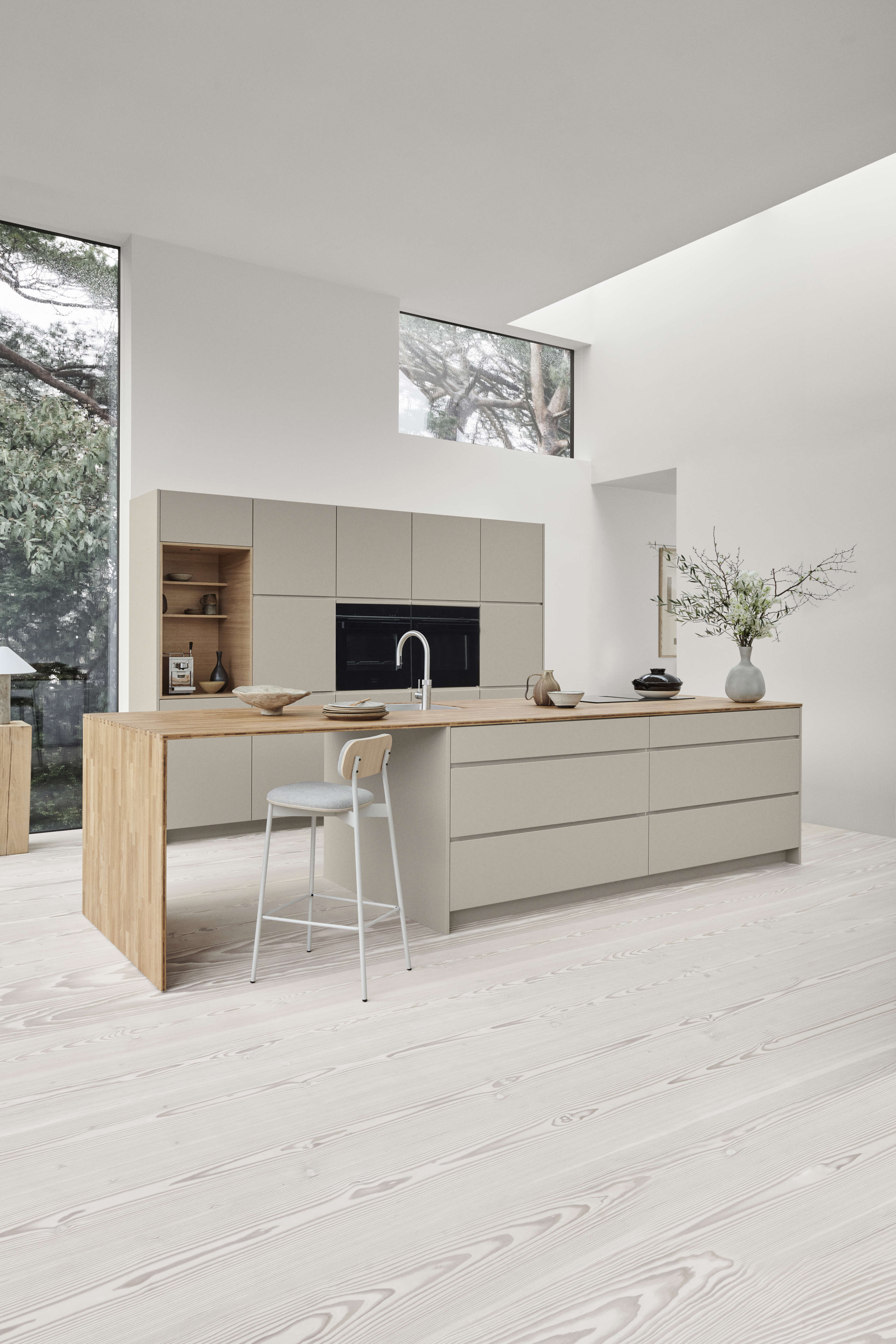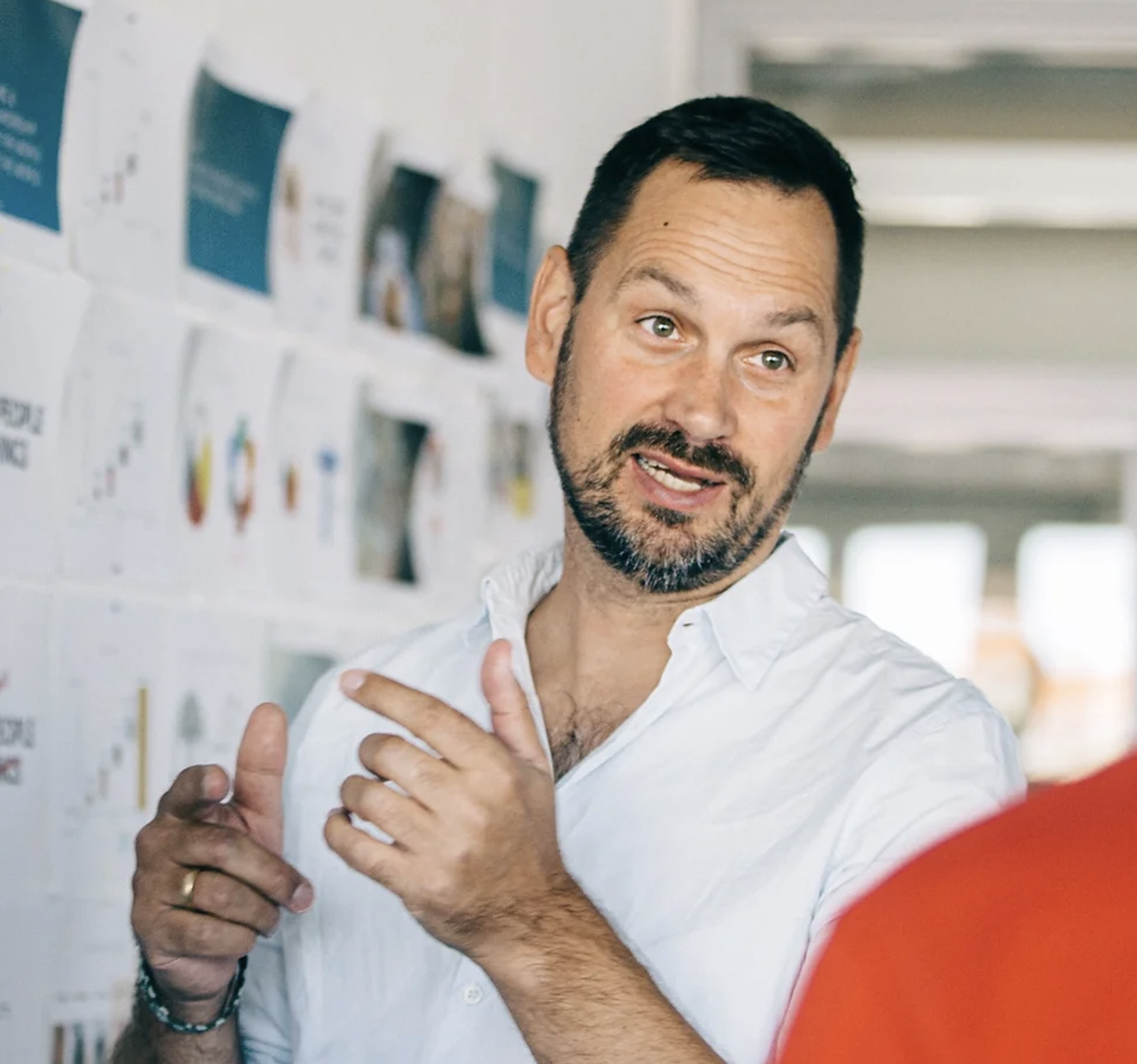
As we discussed in our first episode, most people are familiar with Danish design classics like the Egg and Swan chairs from Arne Jacobson or Jørn Utzon's Sydney Opera House. If you haven't listened, you should go back and do so now. We'll wait.
As a Danish design company ourselves, we wanted to dig a little deeper and figure out what it is that sets Danish design apart. In our quest to do this, we came across the Danish Design Council's Danish Design DNA and that seemed like a great place to start.
Back in 2016, the Danish Design Council teamed up with the Danish Design Centre, the Royal Danish Academy of Architecture, Design and Conservation and Design Museum Denmark and decided to take a closer look at Danish design and really get to the essence of it.
The result was a mapping of the Danish Design DNA, which was presented in 2017 when Aarhus was the European Cultural Capital. Industrial designer Lars Thøgersen was Chairman of the Danish Design Council at the time, and we asked him how the whole project got started.
Julie: Can we move to like the whole the Danish Design DNA and how all that came about and and how it how it came to be. I mean Danish design is known around the world, it's the chairs, it's the lamps. But you saw a need for it being something more than that, right?
Lars: I'm the former Chairman of the Danish Design Council and the Danish Design Council arranges every year a trip and every second year it's in Europe and every other year it's somewhere in the world.
Every time we go on these research trips, these study trips, we call them, to get inspired and see what is hot around the world within the design business, of course. We tend to visit the local Danish representative, that being a trade office or a consultancy, or a...
Julie: Consulate?
Lars: Yeah, exactly. Sorry. (Laughing) Or an embassy, and for an unknown reason, the guy, or woman, whoever is in charge of receiving these Danish Design Council that come visit, they tend to think that now they have to talk about design. And in most of these cases, we were crumbling toes and we're a little bit, you know, OK, so, ooh, when is this going to stop?
And so some of us started talking about how how that was not very good, that the way that they apparently were equipped to talk about Danish design, was antiquated simply. So we had to do something and some of us started talking about that.
Soon after we got home, we formed a group and it was headed by Sune Kjems from Danish Design Council. We started thinking and phrasing and trying to get deeper into what is then the Danish DNA. What is it that makes Danish design special?
So they set out to on that endeavour, trying to put some values on it and seeing whether that could be recognised in a lot of the legacy of Danish design and the through that came ten values, and they're all accessible on the homepage of the Danish Design Council.
Everybody is free to use it. And I know that a lot of Danish design companies have used them trying to support their own case in terms of whatever project they were working on with the client, that being Danish or an international client.

The Danish design DNA is a set of 10 values that define Danish design. Danish design has a social, human, holistic rationale. Its approach is quality, user driven and transformative, and it's founded in craftsmanship and durability while being matter-of- fact and simple.
If you want to explore it for yourself, you'll find a link to their website in our show notes. Sune Kjems is the designer behind the human figure and the icons that are used to communicate the 10 elements. And we spoke to him about his involvement in the project.
Sune: It was definitely a group effort.
Julie: Of course it was.
Sune: But I was maybe the one trying to summarise the discussions and trying to nail how can we communicate what the Danish design DNA is. So we ended up with 10 things categorising. And I did the the idea about relating them to a human being. So, the fundamental stuff and the the approach and the way we we think about it and a way of seeing things. So I was kind of, um, my role was to wrap it up oi a way.. And I did the graphic design.
Julie: You created this very simple human figure.
Sune: Yes, that and icons related to it and we did an exhibition in Aarhus about it...
Julie: Oh, during the year was the cultural capital. Right. Right.
Sune: Yeah. So, yeah. Also just communication - finding the right photos and yeah, so.
Julie: What would you say has has like happened with it since?
Sune: It's interesting because there's all kind of issues with it. That's a communication issue that 10 elements is a lot to remember. It's a little bit strange, because uh, maybe that's also something Danish...I don't know...It was kind of...a little bit flavour of so last year. So, in my point of view it's something that should be integrated in the DNA for the design institutions, like the design...
Julie: The school...
Sune: Referring to it, and actually revitalising it and making it...
Julie: Making it live.
Sune: Making it live, evolving it, is still relevant? Why is it relevant? And how can we keep putting new examples to it? So what are the new digital designs? Or experience design or system design or how does that relate to it? I don't know if it is you can say it's awful.
Julie: It's sort of requires, to stay relevant and alive, it requires. working with it, evolving it and continuing the thinking.
Sune: Somebody has to love it.
Photo credit: Danish Design Council.

In Kvik we definitely love Danish design and we think that the Danish design DNA is indeed relevant and we will be exploring it further.
We sell Danish design kitchens in more than 185 stores in 12 countries, so we think a lot about Danish design on a daily basis. In fact, we invented something that we call The Sociable Kitchen®. It's not a particular kitchen design, but more of a philosophy for designing kitchens so that they fit into people's lives both today and tomorrow. We talked about this concept with Lars Thøgersen.
Lars: I think maybe where Kvik did something that stood out in that kitchen business, which has a lot of commonalities you could say, and not one is more exciting than the other so much. But I think actually when they introduced, I don't remember when, but they came up with this samtalekøkken (note: that's The Sociable Kitchen® in Danish).
Julie: Yes, The Sociable Kitchen®.
Lars: I thought that was really...even at the time when it happened...This is what, 20 years ago?
Julie: It was in 1998. 25 years ago.
Lars: Well, there you go. But God, I am old. 25 years ago? So anyway, I just remember when it came out, I thought it was elegantly put and also well seen that that is what a kitchen is or should be - is something where we meet and greet.
Julie: It's social!
Lars:Yeah, it's social and that is the whole point. But putting these two words together - samtale + køkken. I thought was well seen, well done and a way of differentiating oneself. And also trying to grasp the the essence of what a kitchen is. We all know it's for making food, but today it is not for survival. It is also for sociable greetings and meetings...
Julie: It's where you have your friends over.
Lars: ...and with friends and family. And so there's a lot of of social elements in that kitchen today, much more than when it was hidden away and it was some old fashioned...
Julie: A separate little room...
Lars: Yeah, and something that we did not want to show because that was where all the cooking and
Julie...the dishes and the pots and pans...
Lars: ...all that went. So you want to sort of keep that away and sit in the dining room and only look at good things while´ eating and being together. Well, I hope that they can carry on that way of thinking and that while grasping into a soul of what Danish design is.

MANO arizona beige
15.040 €
The Danish word for The Sociable Kitchen®, samtalekøkken, actually became so popular it entered the lexicon. And you can find it in the Danish dictionary today. We loved it so much we even trademarked the term in 11 languages.
In the next episode, we'll take a closer look at the strands of the Danish design DNA, and we hope you'll come along for the journey. Episode 3 is in the feed, so go ahead and binge it now.
And please hit subscribe so you don't miss out on our future episodes.
If you'd like to learn more about the Danish design DNA, or see any of the designs we mentioned in this episode, just visit our website. You'll find a link in the show notes.
Thank you for listening.
The Sociable Kitchen® was produced this week by me, Julie Broberg and sound engineer Magnus Vad.
Special thanks to everyone who appeared in this episode, Lars Thøgersen and Sune Kjems from the Danish Design Council.
Additional recordings were done at Mastertone Studio in Copenhagen.
Our logo was created by our own graphic designer and brand guardian Helle Krogh.
Our theme music was created for Kvik by Uncle Grey.
Produced at Feedback Studio in the old meatpacking district near the harbour in Aarhus.
Featured in this episode

Lars Thøgersen
Industrial Designer and former Chair of the Danish Design Council

Sune Kjems
Founding Partner, Via Design

Julie Broberg
Host of The Sociable Kitchen® podcast
